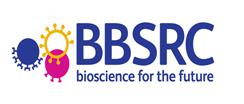Hidden Gems - Practical Biology
We've found some real gems here for including more practical work in Key Stage Three biology. Each resource chosen can help to add context to the learning as they are linked to real life situations or problems.
Can organisms exist on other planets? Should we believe the hype about some of the products we buy? How can medical care be personalised? What's it like to be a heart surgeon?
Visit the practical work page to access all resources and lists focussing on practical work in secondary science: www.nationalstemcentre.org.uk/sciencepracticals
Biotechnology: Bacterial Language
Bacteria can produce signalling molecules that are detected by other bacteria of the same or different species. These bacteria can detect both the presence and the concentration of the signalling molecules.
Quorum sensing is thought to play a major role in the virulence of pathogens and research in this field could be key to finding new antibiotics.
In this activity, students cultivate E. carotovora and Vibrio fischer together to try to trigger luminescence in the second of these species. It is probable that these two species can ‘communicate’ like this because they are known to use the same signalling molecules.
The practical is aimed at Key Stage Three students, and links to cells and cell functions, growth and reproduction of bacteria and adaption of organisms to habitats.
How bacteria communicate
This isn't a practical resource, but we couldn't resist including this fantastic TED Talk as it links so well to the resource above. Bonnie Bassier explains how and why bacteria 'talk' to each other. Her research has the potential to produce the next generation of antibiotics.
Heart Surgery and Dissection
This is a great extension of the standard heart dissection activity, where students take on the role of a heart surgeon as they dissect.
The student worksheet provides detailed notes on what to look for, as they identify the internal and external anatomy of a heart. Students also consider heart diseases and disorders, describe how they occur, and name risk factors and possible preventative measures.
What's Your Limit?
You can use this activity to add a different slant to learning about respiration, cell biology or enzymes and rates of reaction.
The resource uses the context of thinking about whether life can exist on other planets where conditions are likely to be very different.
On Earth, a degree of variance from ‘ideal’ ranges is tolerable for a small number of organisms known as extremophiles. This investigation looks at the effects of subjecting a living organism (yeast) to some extreme conditions and observing changes to rates of reaction – indicating the ranges at which it can survive.
Investigating Antimicrobials
Should students believe all the advertising claims they see?
A wide range of products, both synthetic and natural, claim to have microbicidal properties. Students can test these claims using this clear set of instructions.
It includes a range of techniques, such as plating microbes onto agar, using impregnated discs and measuring zones of inhibition.
Antifungals: Inhibition of Fungal Growth
This is a similar activity to the one described above, but students investigate the effects of various antifungal treatments on the growth of yeast.
Antifungal treatments available from pharmacists include:
• Canistan
• Daktarin
• Diflucan




